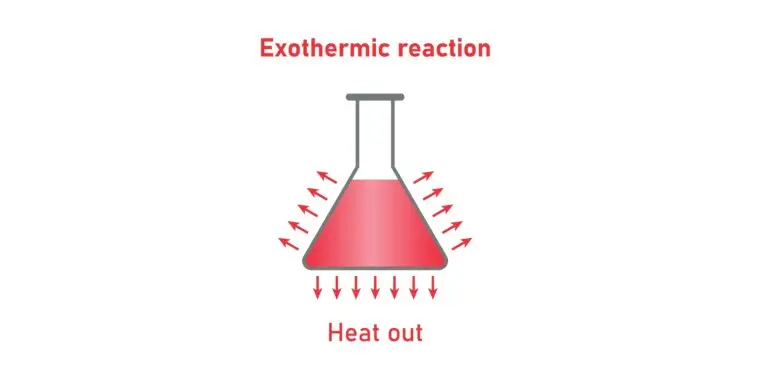Exothermic Reaction

Table of Contents
What are Exothermic Reactions
An exothermic reaction is a chemical process that gives off energy to its surroundings as heat. This means that during such a reaction, energy is transferred from the reacting substances to the area around them.
Specifically, in an exothermic reaction, the substances produced have less energy than those we started with. This results in a decrease in enthalpy, symbolized as ∆H, indicating that the reaction loses energy, which is felt as heat.
Exothermic Reaction Properties
Energy Release
Exothermic reactions release energy, making the surrounding area warmer. The energy usually appears as heat, but it can also come out as light or sound, based on the type of reaction.
For instance, in a fireworks display, the exothermic reactions produce light and heat, creating the bright colors and warmth we experience. Similarly, some reactions might emit sound, like the crackling noise in a burning log.
Bond Formation and Energy Release
In an exothermic reaction, energy is released when new chemical bonds form in the product molecules. This happens because the atoms in the reactants join to create more stable bonds in the products. As these more stable bonds form, the system’s potential energy drops. This potential energy decrease releases energy, often as heat, into the surroundings.
Examples of Exothermic Reactions
Common examples of exothermic reactions include:
Combustion reactions: These occur when substances like wood or fuels burn. For example, methane (CH4) burns in the presence of oxygen (O2) to produce carbon dioxide (CO2), water (H2O), and energy:
- CH4(g) + 2O2(g) → CO2(g) + 2H2O(l) + energy This reaction releases a lot of heat, which is why it’s used for heating and power generation.
Neutralization reactions: These happen when an acid and a base combine to form water and a salt, releasing energy. An example is:
- HCl(aq) + NaOH(aq) → NaCl(aq) + H2O(l) + energy In this process, hydrochloric acid (HCl) reacts with sodium hydroxide (NaOH) to create sodium chloride (NaCl) and water, with heat being a byproduct.
Formation of ionic compounds: Combining elements to form compounds through electrostatic attraction between oppositely charged ions, releasing energy. For instance:
- Na(s) + Cl2(g) → 2NaCl(s) Here, sodium (Na) reacts with chlorine (Cl2) to form sodium chloride (NaCl), which is table salt. The formation of the ionic bond between sodium and chlorine atoms releases energy.
Related Links
Alkali Metals
Endothermic Reaction
Diffusion
Solute